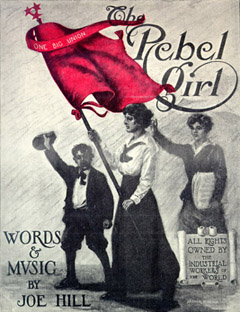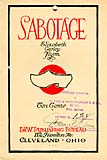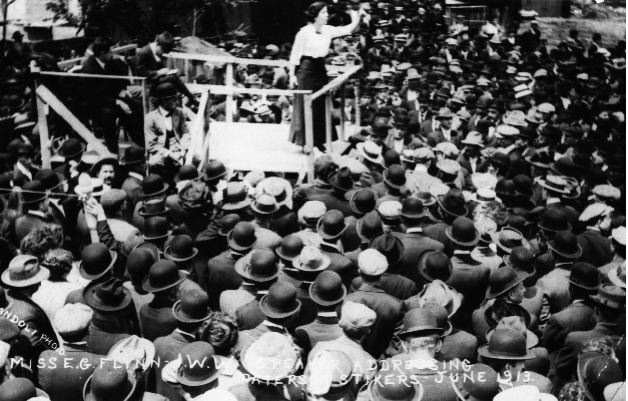Sabotage - by Elizabeth Gurley Flynn
Originally published as SABOTAGE, THE CONSCIOUS WITHDRAWAL OF THE WORKERS' INDUSTRIAL EFFICIENCY, in October, 1916, by the IWW publishing bureau, in Cleveland, Ohio. It was later withdrawn from the IWW's official litearture. The pampahlet originally sold for 10 cents.
 Disclaimer:
Disclaimer:
The following document is presented for historical purposes and in the interest of the freedom of speech. The IWW takes no official position on sabotage (i.e. the IWW neither condones nor condemns such actions). Workers who engage in some of the following forms of sabotage risk legal sanctions.
Elizabeth Gurley-Flynn's Introduction:
The interest in sabotage in the United States has developed lately on account of the case of Frederick Sumner Boyd in the state of New Jersey as an aftermath of the Paterson strike. Before his arrest and conviction for advocating sabotage, little or nothing was known of this particular form of labor tactic in the United States. Now there has developed a two-fold necessity to advocate it: not only to explain what it means to the worker in his fight for better conditions, but also to justify our fellow-worker Boyd in everything that he said. So I am desirous primarily to explain sabotage, to explain it in this two-fold significance, first as to its utility and second as to its legality.
 Sabotage - Table of Contents:
Sabotage - Table of Contents:
- Its Necessity in the Class War
- General Forms of Sabotage
- Short Pay, Less Work, "Ca Canny"
- Interfering With Quality of Goods
- Boyd's Advice to Silk Mill Slaves
- "Dynamiting" Silk
- Non-Adulteration and Over-Adulteration
- Interfering With Service. "Open Mouth" Sabotage
- Following The "Book of Rules"
- Putting The Machine on Strike
- "Print The Truth or You Don't Print at All"
- "Used Sabotage, But Didn't Know What You Called It"
- Sabotage and "Moral Fiber"
- Limiting The Over-Supply of Slaves
- Sabotage a War Measure

Elizabeth Gurley Flynn addresses a crowd in Patterson, New Jersey in 1913 during the IWW silk strike.